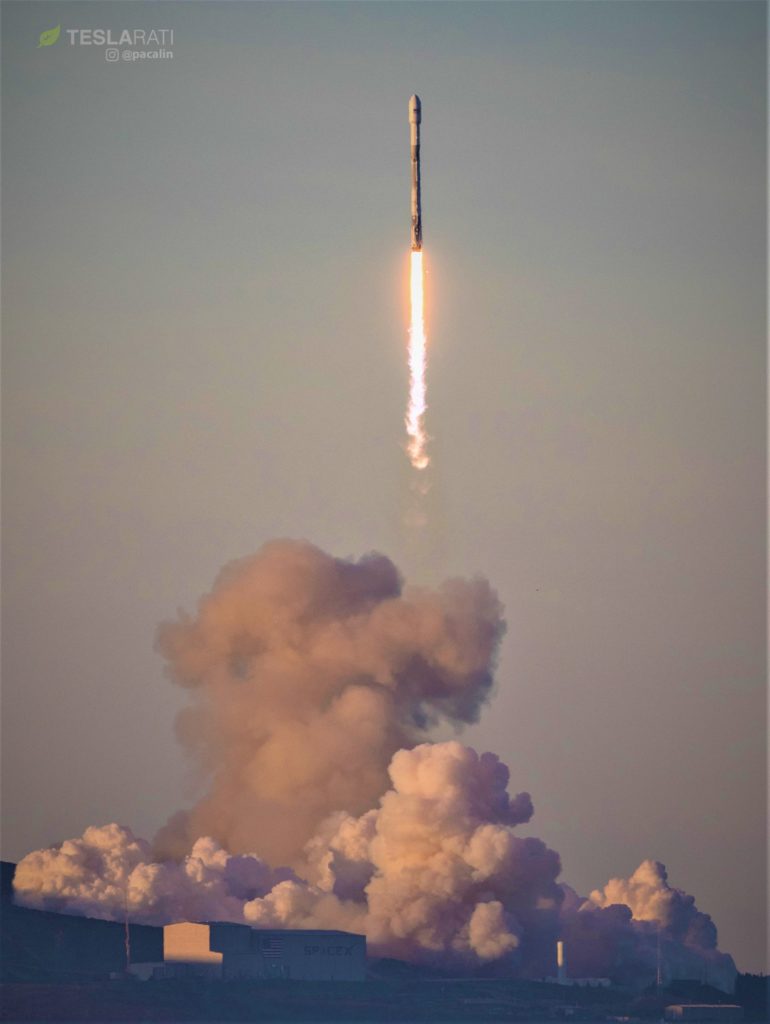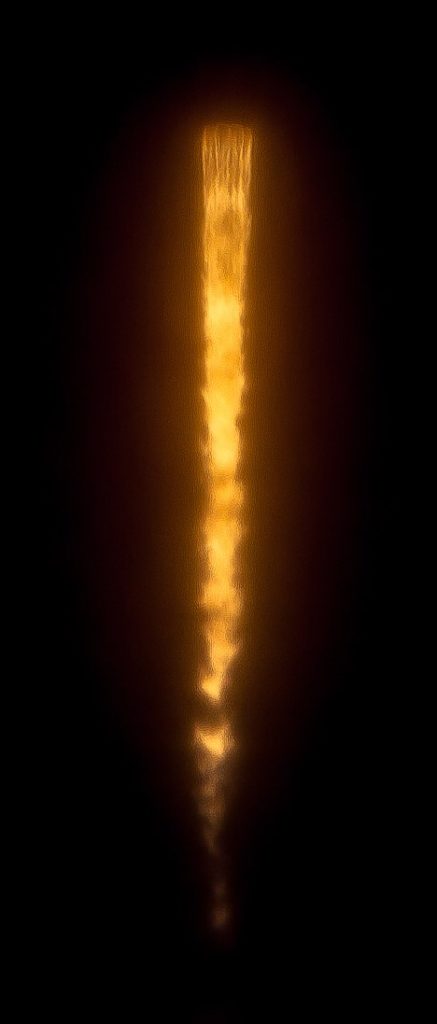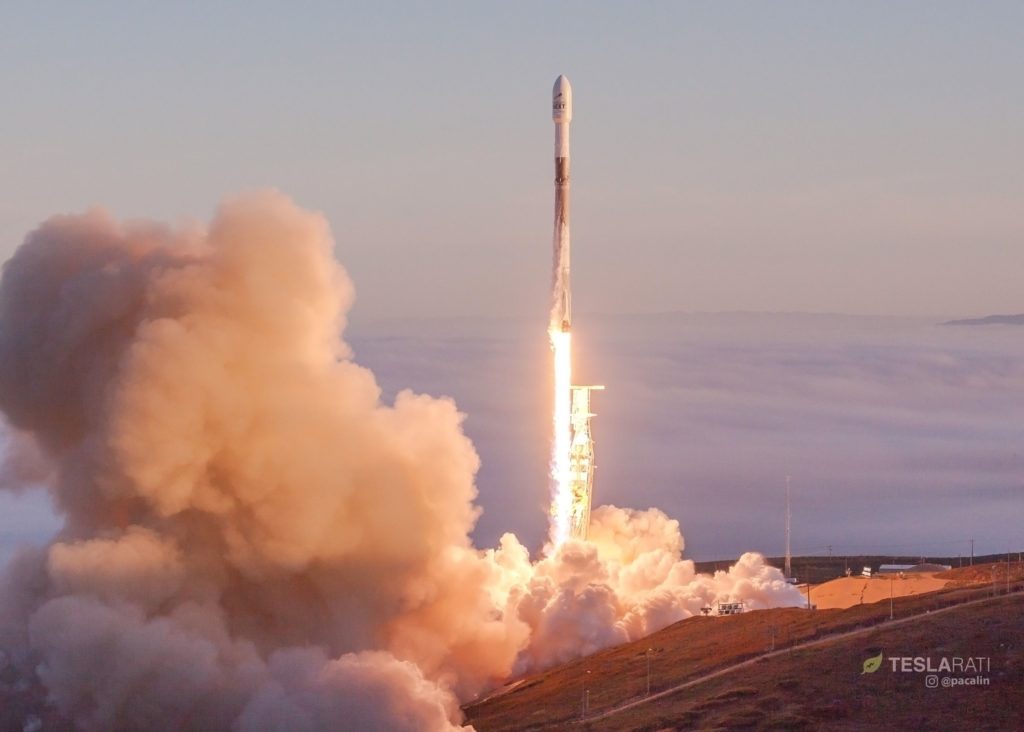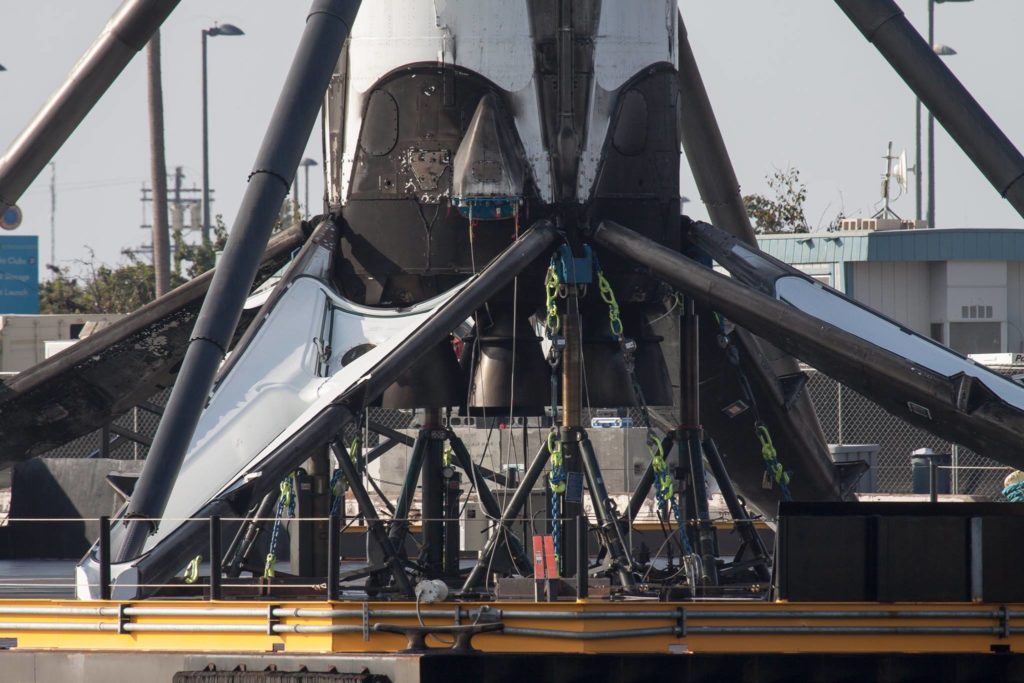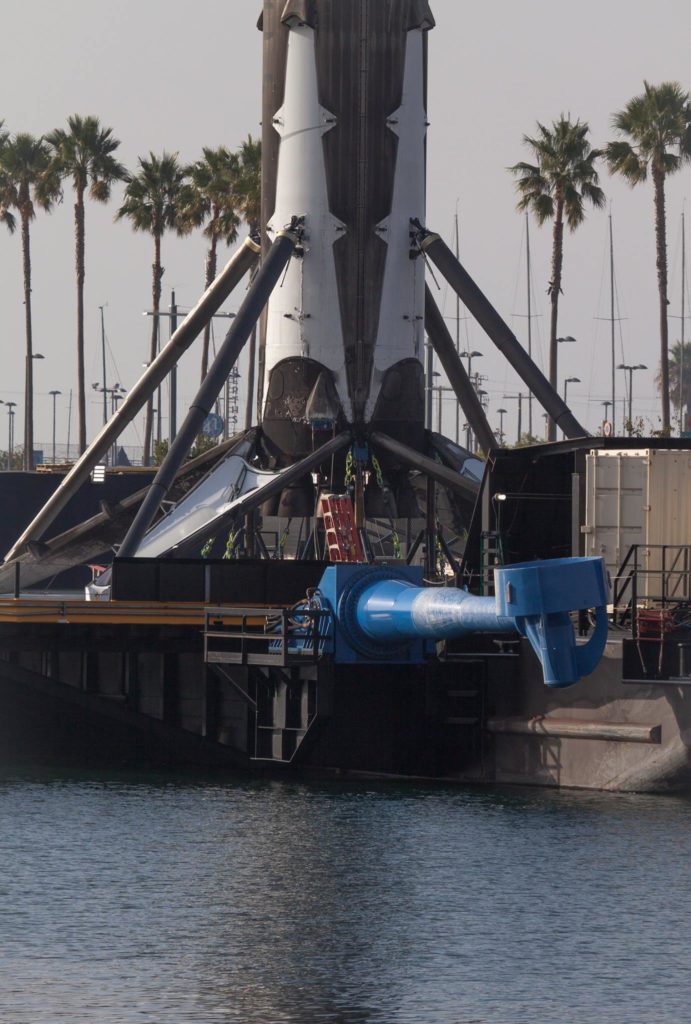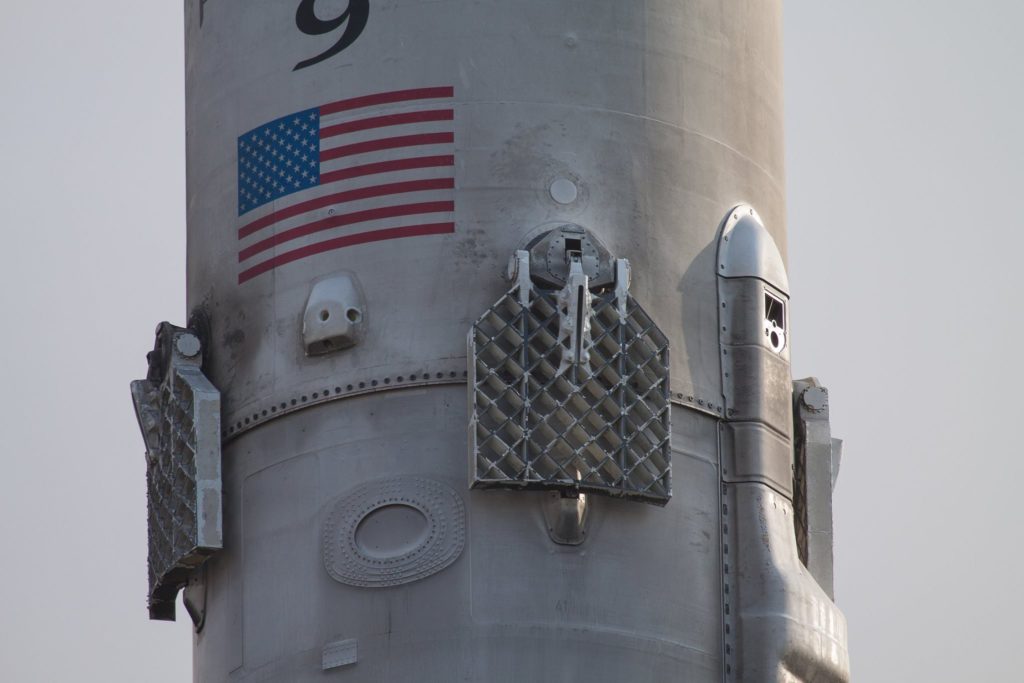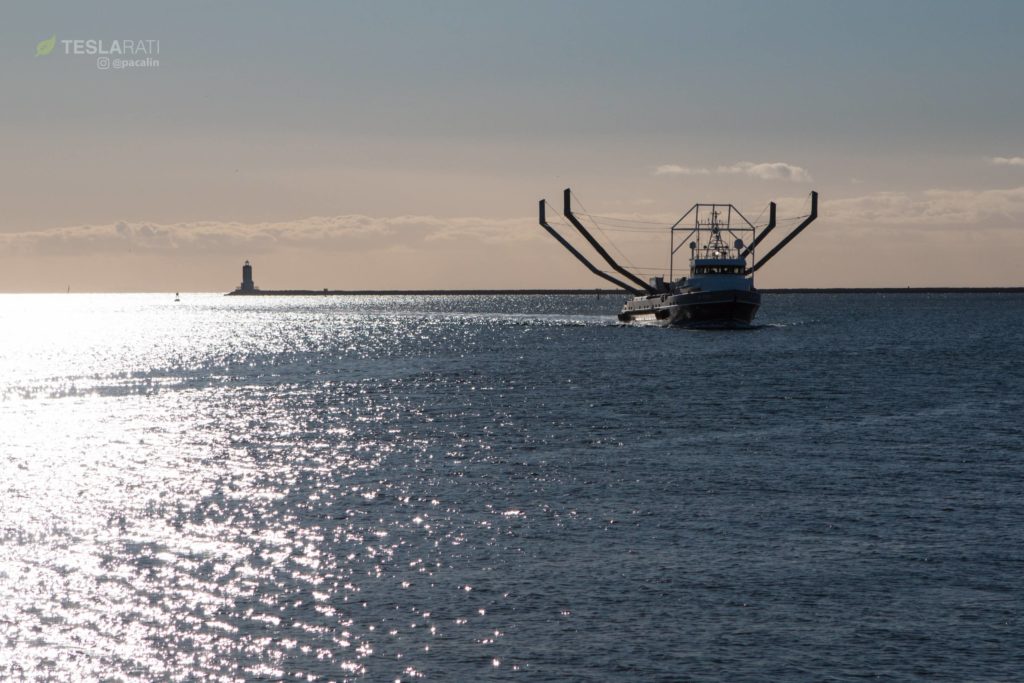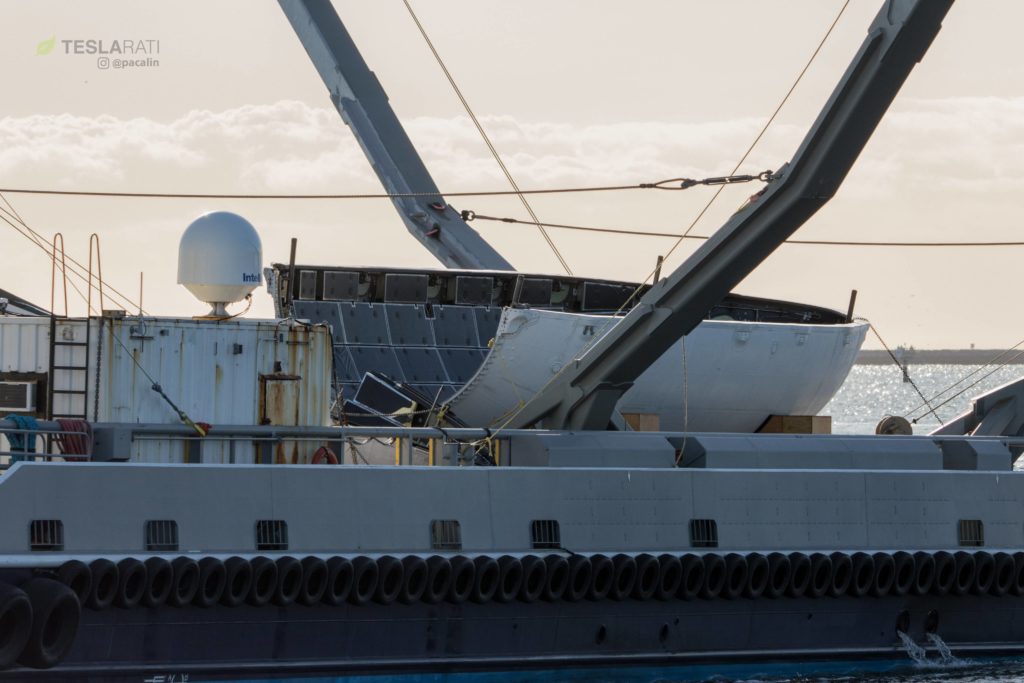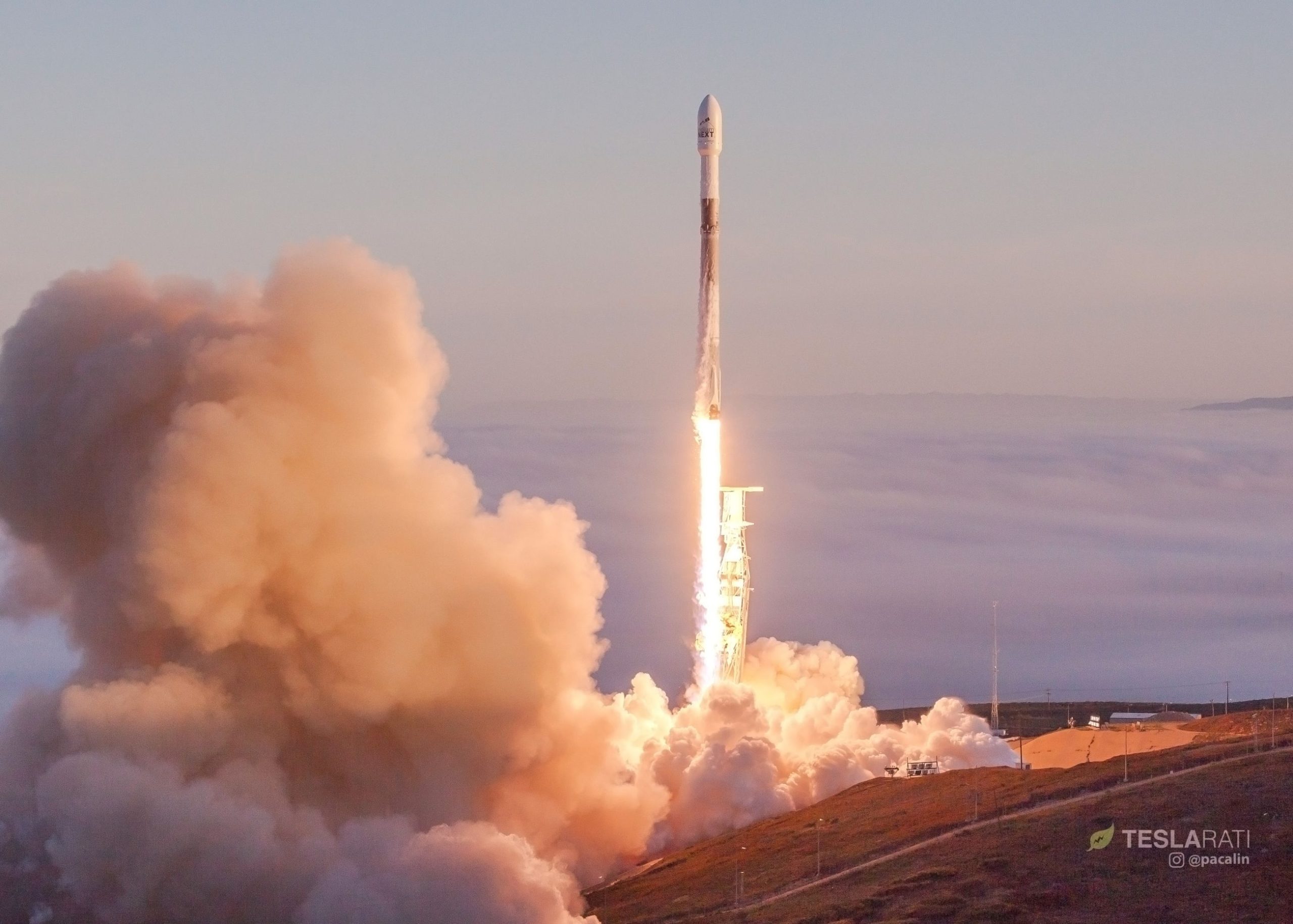
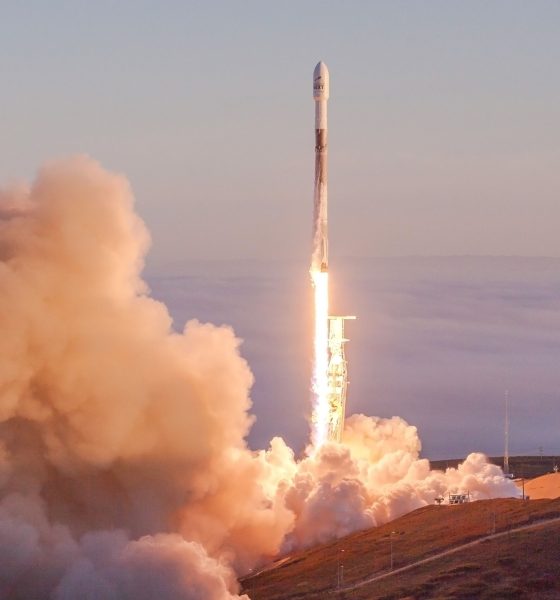
News
SpaceX pushes boundaries of fairing recovery with breathtaking sunrise launch [photos]
SpaceX has soared past the halfway point of completion for Iridium’s next-generation NEXT constellation with the successful launch of satellites 41-50 earlier this morning. SpaceX has three additional launches contracted with Iridium for a total of eight. Despite intentionally ditching the flight-proven first stage booster in the Pacific Ocean, SpaceX attempted to recover one half of the payload fairing; an effort acknowledged to be predominately experimental at this point.
- F9 B1041 gives one final swan song with the successful launch of 10 more Iridium NEXT satellites. (Pauline Acalin)
- Although fog and camera difficulties slightly marred the shot, note the details in Falcon 9’s normally white-hot exhaust. (Pauline Acalin)
- Falcon 9 1041 rises above a sea of fog for one last mission to orbit. Half of its fairing made a surprise appearance in port on Saturday. (Pauline Acalin)
Iridium-5 continues a recent trend of monthly launches out of SpaceX’s Vandenberg Air Force Base launch facilities – the company’s SLC-4E pad is known to take a bit longer than its East coast brethren for refurbishment and repairs between launches, typically maxing out approximately one launch per month. This launch also marks another flight-proven booster intentionally expended, likely in part because the West Coast drone ship Just Read The Instructions is currently out of commission, awaiting the delivery of critical subsystems stripped to repair the Eastern OCISLY.
As of posting, all 10 Iridium NEXT satellites have been successfully deployed into low Earth orbit, marking the successful completion of this mission. On the recovery side of the mission, SpaceX CEO Elon Musk had initially teased Mr Steven’s upcoming fairing catch attempt – his silence since providing a T-0 around 7:44 am PST presumably speaks to the experimental nature of these fairing recovery efforts, and hints that this attempt may not have been successful.
GPS guided parafoil twisted, so fairing impacted water at high speed. Air wake from fairing messing w parafoil steering. Doing helo drop tests in next few weeks to solve.
— Elon Musk (@elonmusk) March 30, 2018
A couple hours after launch, Musk took to Twitter to confirm that this fairing recovery effort had failed, largely due to the complexity of safely parafoiling such a large, fast, and ungainly object. “[Helicopter] drop tests” are planned for coming weeks in order to put to bed the problems ailing fairing recovery. As SpaceX announcer and materials engineer Michael Hammersley noted, “the ultimate goal is full recovery and reuse of the entire vehicle,” and experimental fairing recovery efforts push SpaceX one step closer to that ambition.
- F9 B1041 arrives in port after its first successful mission, Iridium-3, in October 2017. (Pauline Acalin)
- 1041 flew for its second and final time earlier this morning, sans any landing aboard JRTI. (Pauline Acalin)
- B1041 presumably soft-landed in the Pacific, as did its fairing. (Pauline Acalin)
- RIP. (Pauline Acalin)
Space (regulation) oddity
Perhaps the most unusual feature of this launch was an announcement soon after the webcast began that NOAA (the National Ocean and Atmospheric Administration) apparently restricted SpaceX’s ability to provide live coverage of Falcon 9’s upper stage once in orbit, and the webcast thus ended moments after the second stage Merlin Vacuum engine shut off. By all appearances, this is fairly unprecedented: NOAA is tasked with “licensing…operations of private space-based remote sensing systems” with their Commercial Remote Sensing Regulatory Affairs (CRSRA) branch, but they’ve been quite inept and heavy-handed in their implementation of Earth imaging regulation. Nominally, the purpose of that regulation is to protect sensitive US security facilities and activities from the unblinking eyes of private, orbital imaging satellites, but NOAA has quite transparently exploited its power in ways that create extreme uncertainty and near-insurmountable barriers to entry for prospective commercial Earth-imaging enterprises.
What an absolutely beautiful launch at Vandenberg this morning. Congratulations to SpaceX on another successful mission accomplished! #SpaceX #Iridium5 @Teslarati pic.twitter.com/hsp7H5bv8J
— Pauline Acalin (@w00ki33) March 30, 2018
Presumably, this protects their (and their prime contractors’) vested interest in NOAA’s continuing quasi-monopoly over Earth sciences and weather-related satellite production and operations, a segment of the agency’s budget known to aggressively devour as much of NOAA’s budget as practicable. In this sense, something as arbitrary as preventing a launch provider like SpaceX from showing live, low-resolution (functionally useless) video feeds from orbit would be thoroughly disappointing, but in no way surprising. In this case, the restriction is comically transparent in its blatant inconsistency: SpaceX has flown more than 50 launches over more than a decade, all of which featured some form of live coverage of the upper stage once in orbit, and none of which NOAA objected to. Fingers crossed that this absurd restriction can be lifted sooner than later.
- No fairing snack for Mr Steven this time around. (Pauline Acalin)
- PAZ’s recovered fairing half sadly cracked beyond repair while being hauled aboard Mr Steven. (Pauline Acalin)
Follow us for live updates, behind-the-scenes sneak peeks, and a sea of beautiful photos from our East and West coast photographers.
Teslarati – Instagram – Twitter
Tom Cross – Twitter
Pauline Acalin – Twitter
Eric Ralph – Twitter

News
Tesla tinkering with Speed Profiles on FSD v14.2.1 has gone too far

Tesla recently released Full Self-Driving (FSD) v14.2.1, its latest version, but the tinkering with Speed Profiles has perhaps gone too far.
We try to keep it as real as possible with Full Self-Driving operation, and we are well aware that with the new versions, some things get better, but others get worse. It is all part of the process with FSD, and refinements are usually available within a week or so.
However, the latest v14.2.1 update has brought out some major complaints with Speed Profiles, at least on my end. It seems the adjustments have gone a tad too far, and there is a sizeable gap between Profiles that are next to one another.
Tesla FSD v14.2.1 first impressions:
✅ Smooth, stress-free highway operation
✅ Speed Profiles are refined — Hurry seems to be limited to 10 MPH over on highways. Switching from Mad Max to Hurry results in an abrupt braking pattern. Nothing of concern but do feel as if Speed…— TESLARATI (@Teslarati) November 29, 2025
The gap is so large that changing between them presents a bit of an unwelcome and drastic reduction in speed, which is perhaps a tad too fast for my liking. Additionally, Speed Profiles seem to have a set Speed Limit offset, which makes it less functional in live traffic situations.
Before I go any further, I’d like to remind everyone reading this that what I am about to write is purely my opinion; it is not right or wrong, or how everyone might feel. I am well aware that driving behaviors are widely subjective; what is acceptable to one might be unacceptable to another.
Speed Profiles are ‘Set’ to a Speed
From what I’ve experienced on v14.2.1, Tesla has chosen to go with somewhat of a preset max speed for each Speed Profile. With ‘Hurry,’ it appears to be 10 MPH over the speed limit, and it will not go even a single MPH faster than that. In a 55 MPH zone, it will only travel 65 MPH. Meanwhile, ‘Standard’ seems to be fixed at between 4-5 MPH over.
This is sort of a tough thing to have fixed, in my opinion. The speed at which the car travels should not be fixed; it should be more dependent on how traffic around it is traveling.
It almost seems as if the Speed Profile chosen should be more of a Behavior Profile. Standard should perform passes only to traffic that is slower than the traffic. If traffic is traveling at 75 MPH in a 65 MPH zone, the car should travel at 75 MPH. It should pass traffic that travels slower than this.
Hurry should be more willing to overtake cars, travel more than 10 MPH over the limit, and act as if someone is in a hurry to get somewhere, hence the name. Setting strict limits on how fast it will travel seems to be a real damper on its capabilities. It did much better in previous versions.
Some Speed Profiles are Too Distant from Others
This is specifically about Hurry and Mad Max, which are neighbors in the Speed Profiles menu. Hurry will only go 10 MPH over the limit, but Mad Max will travel similarly to traffic around it. I’ve seen some people say Mad Max is too slow, but I have not had that opinion when using it.
In a 55 MPH zone during Black Friday and Small Business Saturday, it is not unusual for traffic around me to travel in the low to mid-80s. Mad Max was very suitable for some traffic situations yesterday, especially as cars were traveling very fast. However, sometimes it required me to “gear down” into Hurry, especially as, at times, it would try to pass slower traffic in the right lane, a move I’m not super fond of.
We had some readers also mention this to us:
The abrupt speed reduction when switching to a slower speed profile is definitely an issue that should be improved upon.
— David Klem (@daklem) November 29, 2025
After switching from Mad Max to Hurry, there is a very abrupt drop in speed. It is not violent by any means, but it does shift your body forward, and it seems as if it is a tad drastic and could be refined further.
News
Tesla’s most affordable car is coming to the Netherlands
The trim is expected to launch at €36,990, making it the most affordable Model 3 the Dutch market has seen in years.
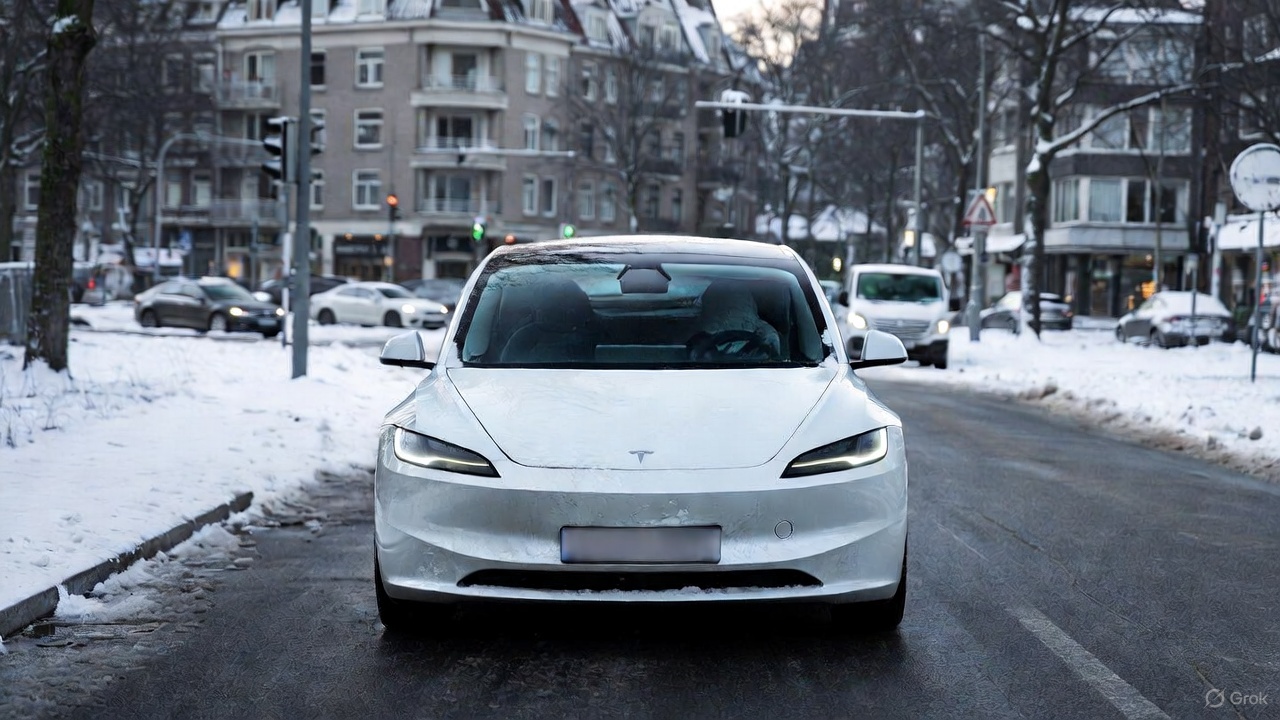
Tesla is preparing to introduce the Model 3 Standard to the Netherlands this December, as per information obtained by AutoWeek. The trim is expected to launch at €36,990, making it the most affordable Model 3 the Dutch market has seen in years.
While Tesla has not formally confirmed the vehicle’s arrival, pricing reportedly comes from a reliable source, the publication noted.
Model 3 Standard lands in NL
The U.S. version of the Model 3 Standard provides a clear preview of what Dutch buyers can expect, such as a no-frills configuration that maintains the recognizable Model 3 look without stripping the car down to a bare interior. The panoramic glass roof is still there, the exterior design is unchanged, and Tesla’s central touchscreen-driven cabin layout stays intact.
Cost reductions come from targeted equipment cuts. The American variant uses fewer speakers, lacks ventilated front seats and heated rear seats, and swaps premium materials for cloth and textile-heavy surfaces. Performance is modest compared with the Premium models, with a 0–100 km/h sprint of about six seconds and an estimated WLTP range near 550 kilometers.
Despite the smaller battery and simpler suspension, the Standard maintains the long-distance capability drivers have come to expect in a Tesla.
Pricing strategy aligns with Dutch EV demand and taxation shifts
At €36,990, the Model 3 Standard fits neatly into Tesla’s ongoing lineup reshuffle. The current Model 3 RWD has crept toward €42,000, creating space for a more competitive entry-level option, and positioning the new Model 3 Standard comfortably below the €39,990 Model Y Standard.
The timing aligns with rising Dutch demand for affordable EVs as subsidies like SEPP fade and tax advantages for electric cars continue to wind down, EVUpdate noted. Buyers seeking a no-frills EV with solid range are then likely to see the new trim as a compelling alternative.
With the U.S. variant long established and the Model Y Standard already available in the Netherlands, the appearance of an entry-level Model 3 in the Dutch configurator seems like a logical next step.
News
Tesla Model Y is still China’s best-selling premium EV through October
The premium-priced SUV outpaced rivals despite a competitive field, while the Model 3 also secured an impressive position.

The Tesla Model Y led China’s top-selling pure electric vehicles in the 200,000–300,000 RMB segment through October 2025, as per Yiche data compiled from China Passenger Car Association (CPCA) figures.
The premium-priced SUV outpaced rivals despite a competitive field, while the Model 3 also secured an impressive position.
The Model Y is still unrivaled
The Model Y’s dominance shines in Yiche’s October report, topping the chart for vehicles priced between 200,000 and 300,000 RMB. With 312,331 units retailed from January through October, the all-electric crossover was China’s best-selling EV in the 200,000–300,000 RMB segment.
The Xiaomi SU7 is a strong challenger at No. 2 with 234,521 units, followed by the Tesla Model 3, which achieved 146,379 retail sales through October. The Model Y’s potentially biggest rival, the Xiaomi YU7, is currently at No. 4 with 80,855 retail units sold.
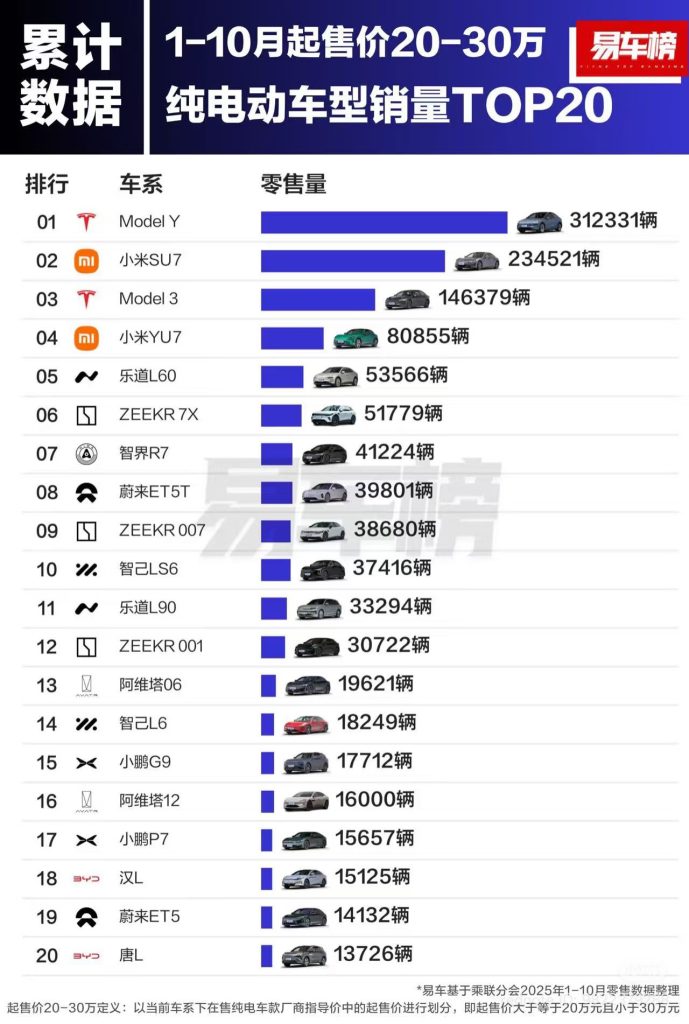
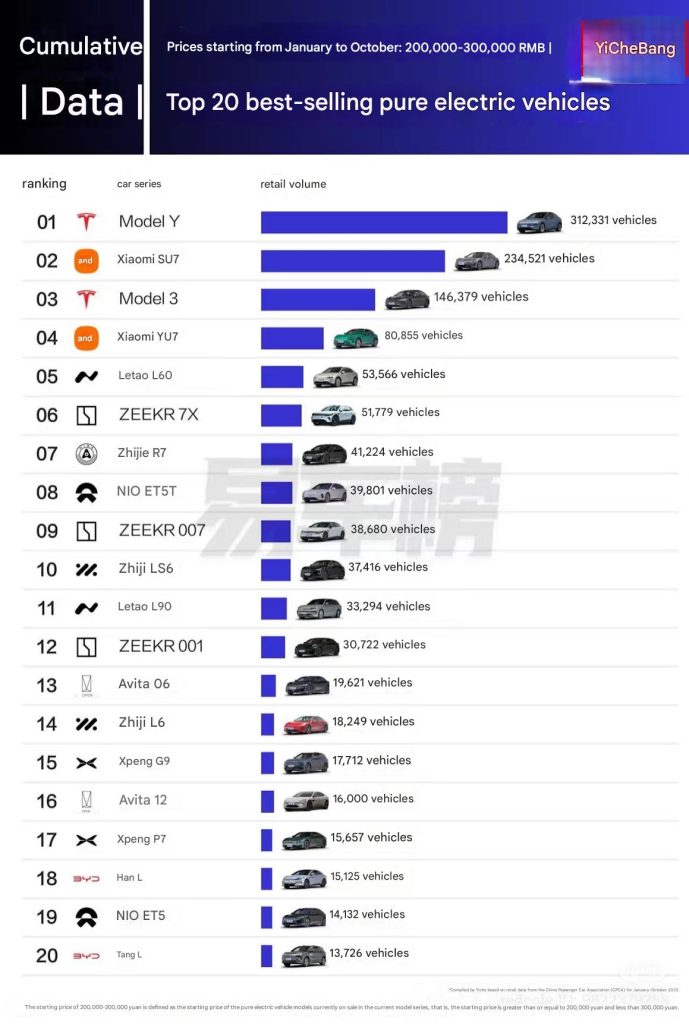
Efficiency kings
The Model 3 and Model Y recently claimed the top two spots in Autohome’s latest real-world energy-consumption test, outperforming a broad field of Chinese-market EVs under identical 120 km/h cruising conditions with 375 kg payload and fixed 24 °C cabin temperature. The Model 3 achieved 20.8 kWh/100 km while the Model Y recorded 21.8 kWh/100 km, reaffirming Tesla’s efficiency lead.
The results drew immediate attention from Xiaomi CEO Lei Jun, who publicly recognized Tesla’s advantage while pledging continued refinement for his brand’s lineup.
“The Xiaomi SU7’s energy consumption performance is also very good; you can take a closer look. The fact that its test results are weaker than Tesla’s is partly due to objective reasons: the Xiaomi SU7 is a C-segment car, larger and with higher specifications, making it heavier and naturally increasing energy consumption. Of course, we will continue to learn from Tesla and further optimize its energy consumption performance!” Lei Jun wrote in a post on Weibo.
